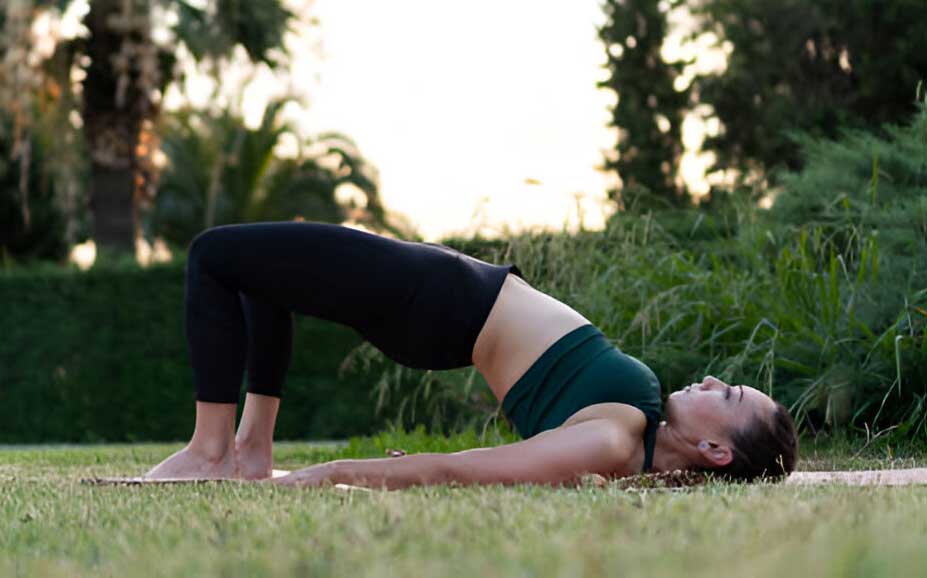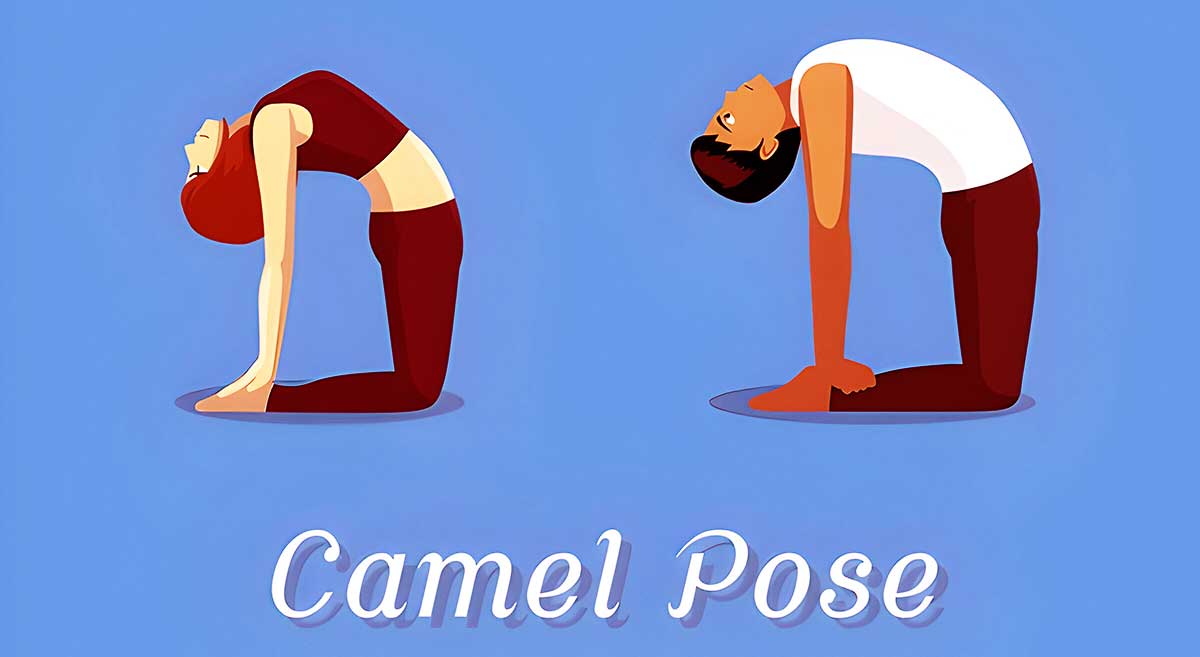How Does Yoga Benefit Liver Function?
The liver is a vital organ responsible for many essential functions, including detoxification, metabolism, digestion, and hormone regulation. Maintaining a healthy liver is crucial for overall well-being. Yoga, an ancient practice that combines physical postures (asanas), breath control (pranayama), and meditation, can play a significant role in supporting liver health. Through specific yoga poses and techniques, yoga helps improve blood circulation, promote detoxification, reduce stress, and enhance overall liver function.
This comprehensive guide will explore how yoga benefits liver function and provide detailed instructions on specific yoga poses, pranayama techniques, and lifestyle practices that support liver health.
The Importance of Liver Function
The liver is responsible for filtering toxins from the blood, producing bile for digestion, storing essential nutrients, and regulating hormones. When liver function is compromised, it can lead to various health issues, including fatigue, digestive problems, weight gain, and more severe conditions such as fatty liver disease or cirrhosis.
Common Symptoms of Poor Liver Function:
- Fatigue: Persistent tiredness or lack of energy
- Digestive Issues: Bloating, indigestion, or constipation
- Jaundice: Yellowing of the skin and eyes
- Weight Gain: Unexplained weight gain, particularly around the abdomen
- Skin Issues: Acne, rashes, or itching
- Mood Swings: Irritability, anxiety, or depression
How Yoga Benefits Liver Function
Yoga offers numerous benefits for liver health by improving blood circulation, promoting detoxification, reducing stress, and enhancing overall well-being. Here’s how yoga can support liver function:
- Improving Blood Circulation: Yoga poses enhance blood flow to the liver, ensuring that it receives the oxygen and nutrients needed for optimal function.
- Promoting Detoxification: Certain yoga poses and pranayama techniques stimulate the liver, aiding in the elimination of toxins from the body.
- Reducing Stress: Chronic stress can negatively impact liver health. Yoga reduces stress by calming the mind and body, supporting liver function.
- Enhancing Digestion: Yoga helps improve digestion, which in turn supports the liver’s role in metabolizing nutrients and processing waste.
- Supporting Mental and Emotional Well-being: Yoga promotes mental clarity and emotional balance, which can positively impact liver health by reducing stress-related damage.
Yoga Poses for Supporting Liver Function
Specific yoga poses are particularly beneficial for stimulating the liver and promoting its overall health. These poses help improve circulation, stimulate the liver, and support detoxification.
1. Bhujangasana (Cobra Pose)
Bhujangasana, or Cobra Pose, is a gentle backbend that stimulates the liver by stretching the abdomen and improving circulation to the abdominal organs. This pose helps promote detoxification and enhances liver function.
How to Perform:
- Lie on your stomach with your legs extended and feet together.
- Place your hands under your shoulders, palms facing down.
- Inhale and lift your chest off the ground, keeping your elbows slightly bent.
- Hold the pose for 15 to 30 seconds, breathing deeply.
- Slowly release the pose and return to the starting position.
Benefits:
- Stimulates the liver and promotes detoxification
- Improves circulation to the abdominal organs
- Strengthens the spine and improves flexibility
2. Dhanurasana (Bow Pose)
Dhanurasana, or Bow Pose, is a deep backbend that stretches the entire front body, including the abdomen. This pose stimulates the liver, improves digestion, and supports detoxification.
How to Perform:
- Lie on your stomach with your legs extended and arms by your sides.
- Bend your knees and reach back to grab your ankles with your hands.
- Inhale and lift your chest and legs off the ground, pulling your ankles towards your shoulders.
- Hold the pose for 15 to 30 seconds, breathing deeply.
- Slowly release the pose and return to the starting position.
Benefits:
- Stimulates the liver and promotes detoxification
- Enhances digestion and supports liver function
- Strengthens the back and improves flexibility
3. Paschimottanasana (Seated Forward Bend)
Paschimottanasana, or Seated Forward Bend, is a calming pose that stimulates the liver and kidneys. This pose helps promote detoxification, improve digestion, and reduce stress, all of which support liver health.
How to Perform:
- Sit on the floor with your legs extended in front of you.
- Inhale and lengthen your spine, reaching your arms overhead.
- Exhale and fold forward, reaching for your feet or ankles.
- Hold the pose for 1 to 3 minutes, breathing deeply.
- Slowly release the pose and return to the starting position.
Benefits:
- Stimulates the liver and promotes detoxification
- Improves digestion and reduces stress
- Enhances flexibility and promotes relaxation
4. Ardha Matsyendrasana (Half Lord of the Fishes Pose)
Ardha Matsyendrasana, or Half Lord of the Fishes Pose, is a twisting pose that stimulates the liver and promotes detoxification. This pose helps improve digestion, reduce bloating, and support liver function.
How to Perform:
- Sit on the floor with your legs extended in front of you.
- Bend your right knee and place your right foot on the outside of your left thigh.
- Inhale and lengthen your spine, then exhale and twist to the right, placing your left elbow on the outside of your right knee.
- Hold the pose for 30 seconds to 1 minute, breathing deeply.
- Repeat on the other side.
Benefits:
- Stimulates the liver and promotes detoxification
- Improves digestion and reduces bloating
- Enhances spinal flexibility and supports liver function
5. Setu Bandhasana (Bridge Pose)
Setu Bandhasana, or Bridge Pose, is a gentle backbend that stimulates the liver and abdominal organs. This pose helps improve circulation, promote detoxification, and support overall liver health.
How to Perform:
- Lie on your back with your knees bent and feet flat on the floor, hip-width apart.
- Place your arms by your sides, palms facing down.
- Lift your hips towards the ceiling, rolling your shoulders underneath you.
- Clasp your hands together under your back and hold the pose for 30 seconds to 1 minute, breathing deeply.
- Slowly release the pose and return to the starting position.
Benefits:
- Stimulates the liver and promotes detoxification
- Improves circulation to the abdominal organs
- Relieves stress and supports liver function
6. Ustrasana (Camel Pose)
Ustrasana, or Camel Pose, is a deep backbend that stimulates the liver by opening the front body and improving circulation to the abdominal organs. This pose helps promote detoxification and enhance liver function.
How to Perform:
- Begin by kneeling on the floor with your knees hip-width apart.
- Place your hands on your lower back for support.
- Slowly arch your back, reaching your hands towards your heels.
- Tilt your head back, opening your throat.
- Hold the pose for 30 seconds to 1 minute, breathing deeply.
- Slowly release the pose and return to the starting position.
Benefits:
- Stimulates the liver and promotes detoxification
- Improves circulation and supports liver health
- Enhances flexibility and reduces stress
7. Janu Sirsasana (Head-to-Knee Forward Bend)
Janu Sirsasana, or Head-to-Knee Forward Bend, is a seated pose that stimulates the liver and kidneys. This pose helps improve digestion, reduce stress, and support detoxification.
How to Perform:
- Sit on the floor with your legs extended in front of you.
- Bend your right knee and place the sole of your right foot against your inner left thigh.
- Inhale and lengthen your spine, reaching your arms overhead.
- Exhale and fold forward, reaching for your left foot or ankle.
- Hold the pose for 1 to 3 minutes, breathing deeply.
- Repeat on the other side.
Benefits:
- Stimulates the liver and promotes detoxification
- Improves digestion and reduces stress
- Enhances flexibility and supports liver function
Pranayama for Supporting Liver Function
Pranayama, or breath control, is an essential aspect of yoga that helps regulate the body’s energy and promote detoxification. Specific pranayama techniques can support liver health by improving circulation, reducing stress, and enhancing overall well-being.
1. Kapalbhati Pranayama (Skull Shining Breath)
Kapalbhati Pranayama, also known as Skull Shining Breath, is a powerful breathing technique that helps detoxify the body, improve circulation, and boost metabolism. This practice can support liver health by promoting the elimination of toxins and enhancing energy levels.
How to Perform:
- Sit in a comfortable position with your spine straight.
- Inhale deeply through your nose, expanding your abdomen.
- Exhale forcefully through your nose, contracting your abdominal muscles with each exhalation.
- Continue this rapid exhalation for 1 to 3 minutes, then relax.
Benefits:
- Detoxifies the body and promotes circulation
- Boosts metabolism and supports liver function
- Enhances overall well-being and reduces stress
2. Nadi Shodhana (Alternate Nostril Breathing)
Nadi Shodhana, or Alternate Nostril Breathing, is a balancing pranayama technique that helps regulate the flow of energy in the body. This practice can support liver health by promoting hormonal balance and reducing stress.
How to Perform:
- Sit in a comfortable position with your spine straight.
- Close your right nostril with your thumb and inhale deeply through your left nostril.
- Close your left nostril with your ring finger and exhale through your right nostril.
- Inhale through your right nostril, close it, and exhale through your left nostril.
- Continue this alternate nostril breathing for 5 to 10 minutes.
Benefits:
- Balances the flow of energy in the body
- Promotes hormonal balance and reduces stress
- Enhances mental clarity and relaxation
3. Bhastrika Pranayama (Bellows Breath)
Bhastrika Pranayama, or Bellows Breath, is an energizing breathing technique that involves rapid, forceful inhalations and exhalations. This practice helps stimulate the liver, improve circulation, and promote detoxification.
How to Perform:
- Sit in a comfortable position with your spine straight.
- Inhale deeply through your nose, expanding your abdomen.
- Exhale forcefully through your nose, contracting your abdominal muscles with each exhalation.
- Continue this rapid inhalation and exhalation for 1 to 3 minutes, then relax.
Benefits:
- Stimulates the liver and promotes detoxification
- Improves circulation and boosts metabolism
- Enhances overall energy and vitality
Meditation and Mindfulness for Liver Health
Meditation and mindfulness practices are essential components of yoga that help calm the mind, reduce stress, and promote emotional well-being. These practices can positively impact liver health by reducing stress-related damage and supporting overall well-being.
1. Mindfulness Meditation
Mindfulness meditation involves focusing on the present moment and observing your thoughts and sensations without judgment. This practice helps reduce stress, improve mental clarity, and support overall liver health.
How to Practice:
- Sit in a comfortable position with your spine straight.
- Close your eyes and focus on your breath, observing each inhalation and exhalation.
- If your mind wanders, gently bring your attention back to your breath.
- Practice mindfulness meditation for 10 to 20 minutes daily.
Benefits:
- Reduces stress and promotes emotional balance
- Supports liver health and overall well-being
- Enhances mental clarity and relaxation
2. Guided Visualization
Guided visualization is a meditation technique that involves imagining positive, healing images to promote relaxation and well-being. This practice can help reduce stress and support liver health.
How to Practice:
- Sit or lie down in a comfortable position and close your eyes.
- Imagine a warm, healing light surrounding your liver, promoting balance and health.
- Visualize the light spreading throughout your body, bringing relaxation and well-being.
- Continue this visualization for 10 to 20 minutes daily.
Benefits:
- Promotes relaxation and reduces stress
- Supports liver health and overall well-being
- Enhances emotional well-being and mental clarity
Lifestyle Changes to Support Liver Health
In addition to yoga and pranayama, certain lifestyle changes can support liver health and complement your yoga practice.
1. Balanced Diet
A balanced diet plays a crucial role in supporting liver health. Include foods rich in antioxidants, fiber, and healthy fats, such as leafy greens, berries, nuts, seeds, and olive oil, to promote liver function. Avoid processed foods, excessive sugar, and alcohol that can strain the liver.
2. Regular Exercise
Regular physical activity, in addition to yoga, helps maintain a healthy weight, improve metabolism, and reduce stress. Incorporate aerobic exercises like walking, swimming, or cycling into your routine to support overall health.
3. Adequate Hydration
Proper hydration is essential for maintaining liver health and supporting detoxification. Drink plenty of water throughout the day to keep your liver hydrated and support the elimination of toxins.
4. Stress Management
Managing stress is crucial for maintaining liver health. In addition to yoga and meditation, consider incorporating relaxation techniques such as deep breathing, journaling, or spending time in nature into your daily routine.
Conclusion
Yoga offers a holistic and effective approach to supporting liver function by improving circulation, promoting detoxification, reducing stress, and enhancing overall well-being. By incorporating specific yoga poses, pranayama techniques, and meditation practices into your daily routine, you can support liver health, enhance detoxification, and promote overall vitality.
In addition to yoga, adopting a balanced diet, regular exercise, adequate hydration, and stress management practices can further support liver health and complement your yoga practice. Whether you’re looking to support liver detoxification, improve digestion, or maintain optimal liver health, yoga provides a natural and effective way to promote well-being.
With consistent practice and a mindful approach, yoga can become a powerful tool in your journey toward better liver health and a balanced, harmonious life.











